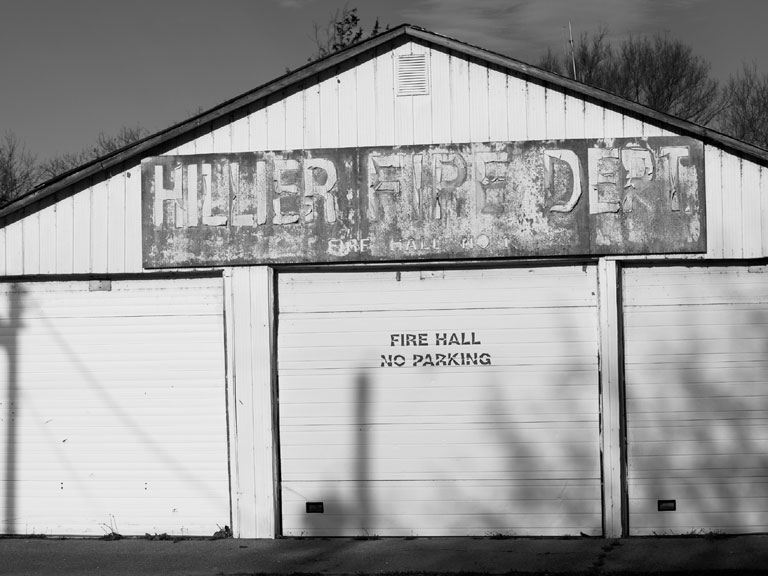County News
Sobering

So many crumbling things, but no money to fix them—or a will to do much about it
The municipality of Prince Edward has more debt than assets. It owes more than it has things. It is in a bad way. Other organizations—like your household—in similar straits would see it as an urgent problem. Most anyone would sell almost anything to extract themselves from such a precarious position.
But not so in this municipality. It can’t manage to part with anything. It seems intent on digging the hole ever deeper while clinging to its things.
Some assets are difficult to sell. Roads and bridges, generally speaking, should stay in public hands. Same for arenas and parks.
It could, however, sell some buildings and land. By the last count, the municipality owned more than 88 buildings. Many are either unused or underused. They have been this way for years, decades even. They all need investment and repairs. The current tally is $100 million. That’s just for the top 49 buildings to meet current standards.
Shire Hall doesn’t have $100 million.
It has 88 buildings in various stages of decay. Yet it is utterly incapable of selling any—to be able to maintain the core it should keep. It isn’t a new story. This newspaper has chronicled what can only be described as a hoarding disorder for more than a decade.
Undaunted, Shire Hall staff are bringing a fresh approach—hoping, this time, to break through to Council.
Staff have conceded there is little point in persuading Council that a single town hall, museum or library building may be considered for disposal. Instead, they are looking at potentially consolidating operational buildings—where municipal staff work— as a means to free up buildings to sell. For money.
But even such a modest—and likely wildly insufficient plan—met with resistance from some council members last week.
‘How will my ward’s services be impacted by fewer buildings?’ ‘The County is geographically dispersed. So too should be our operational assets.’ The arguments are always the same.
The loudest harrumphing, however, came from a couple of councillors who wished to see accessibility raised as governing criteria in prioritizing which to keep and which to dispose of. They chided staff for failing to respond to accessibility issues raised in previous reports.
“If we need a ramp for a town hall, why are we waiting?” asked Picton councillor Kate Mac- Naughton.
The councillor’s question was met with a stiff rebuke from the County manager.
“There is no money for buildings,” said CAO Marcia Wallace flatly. “There is no building reserve. Since 2020 Council has rarely approved an accessibility project. We have brought many to Council year after year, and they are always taken out of the budget due to other priorities.”
Wallace was just getting started.
“That is why we need to sell buildings. We get it—the conversation about selling town halls is not going well. That’s okay. So we are looking at where staff are and looking at drastically reducing our footprint, sell some real estate and get real money.”
She added that the low-hanging fruit—sheds here and there—suggested by some council members were a distraction from the big picture.
“While I would love to sell the shed in Hillier, I don’t expect we are going to generate a lot of cash,” explained CAO Wallace. “We need to sell properties that are worth something so that we can get real money to invest back in.”
Wallace circled back to council criticism that progress wasn’t being made on making County facilities more accessible.
“I do not want to leave it that staff aren’t moving ahead on accessibility,” said CAO Wallace. “We add projects every single year to budget. For the last five years, they have been pulled out for one reason or another. So, we are coming forward with a more comprehensive plan so that we can do this right.”
The notion before the Council was simple: Sell some non-core buildings. Generate cash. Invest in improvements in such things as accessibility. But it was a tougher sell than it should have been.
“I would say even the building we are in today [Shire Hall] fails on accessibility,” acknowledged the CAO. “The parking spot is too far away from the ramp. The ramp has too many turns, and it’s too steep. Once inside, we don’t have an accessible washroom on the main floor.”
The message landed like a splash of cold water.
“Thank you for your honesty,” said Councillor Corey Engelsdorfer, chair of the committee meeting.
If her remarks were intended to give Council pause, however, it didn’t work. Not entirely.
Council member Janice Maynard, worried that the building-selling train might be leaving the station, wanted to know which buildings were on the staff’s list.
“We can’t tell you which properties before doing the report,” said CAO Wallace, with some growing exasperation. “ But—spoiler alert—it is going to say we need to divest some properties. There is no point in doing this exercise—no sense in doing this work—if you aren’t prepared to sell something. If you aren’t prepared to sell community buildings, we have to sell something.”
A handful of councillors still wanted to tinker with criteria, but that effort failed.
In the end, most council members agreed it was a good report and a sound basis upon which to proceed. Maybe, just maybe, one day Council will stop digging its hole deeper.

Comments (0)